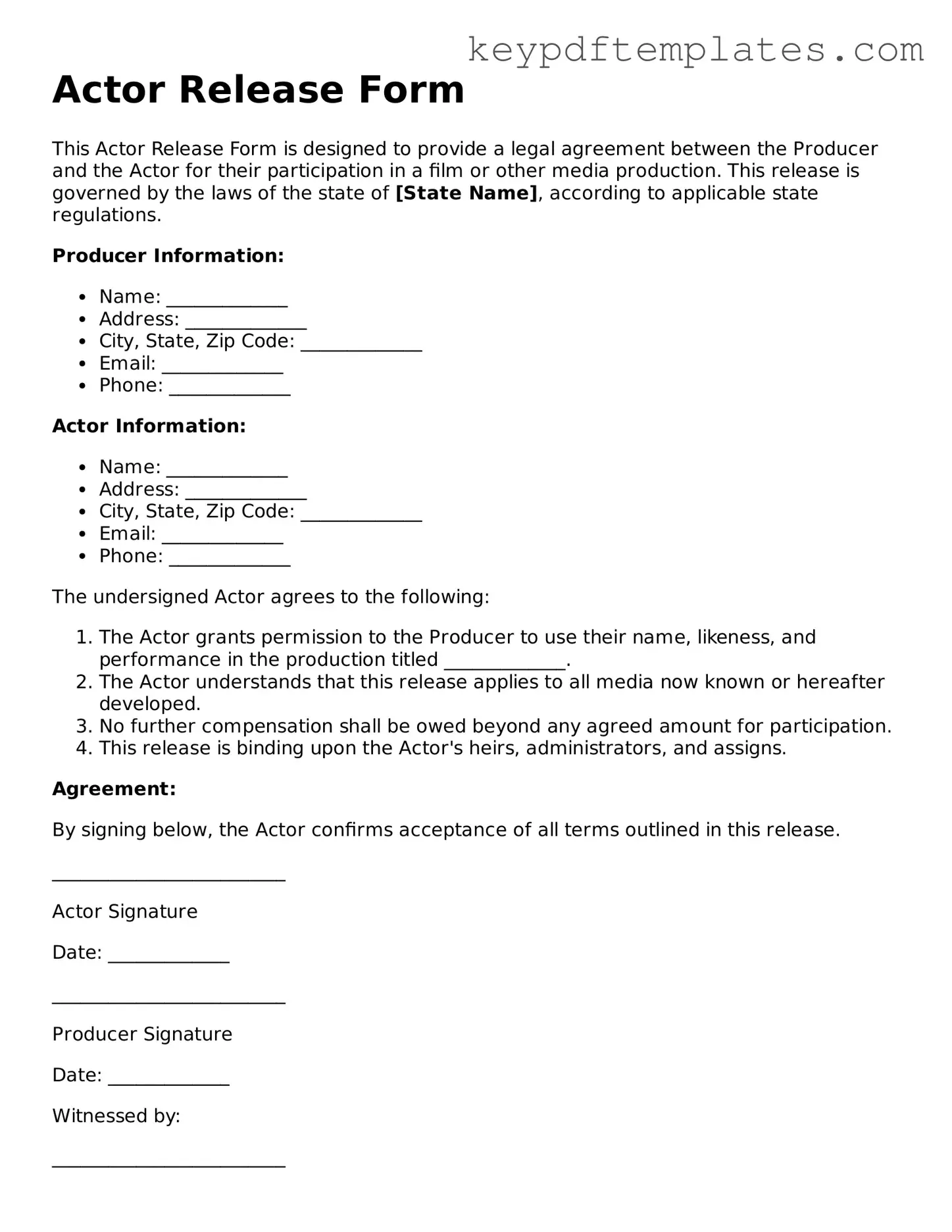Printable Actor Release Template
The Actor Release form is a legal document that grants permission for filmmakers to use an actor's likeness, voice, and performance in a production. This form ensures that both parties understand their rights and responsibilities regarding the use of the actor's image and contributions. Having a signed Actor Release form is crucial for protecting the interests of everyone involved in the project.
Modify Document Online
